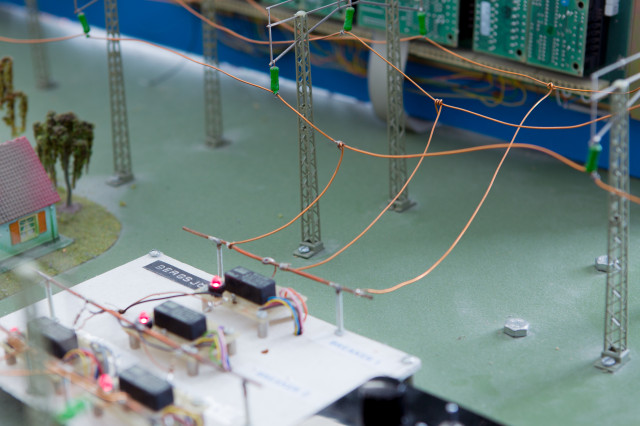Intended learning outcomes:
After passing the course, the student shall be able to
- Based on an embedded system including hardware and software, write a definition and specification of the system that should be designed
- Apply research and data collection methods in a design project
- plan and carry out design project (this includes estimate of time, budget, organisation of project group, technical documentation and quality assurance)
- design, integrate, operate and test one or more embedded computers or systems
- discuss questions around ethics, sustainability and professionalism connected to the project.
Capstone design project that extends over a period of 16-24 weeks where the students work in groups of approximately 5 members per project.
During the introduction of the course, the students study project management, and learn how to carry out a project in groups. During the practical part of the course, the theory from the project management is applied. The practical part of the course starts with a concept phase followed by a design phase. In these phases, the students work with a supervisor from the faculty or industry. The students organise their plans and decide with which technology and within which area their project should be carried out. The area should reflect courses and skills the students have taken part of earlier during their education. Relevant project methods will be applied such as concept generation, product definition, time planning, resource allocation and associated skills.
During the implementation phase, the students design and implement a prototype. This will take place in a practical environment that reflects the methods and processes that are used in commercial engineering work. The students have access to special seminars, for example "rapid prototyping" and "production of circuit boards", which give them the practical skills that are needed to substantiate their designs. The students have weekly meetings with their supervisors and mentors.
In the final phase, the students optimise their design, develop and evaluate their results in a real evaluation or test environment. In this operational phase of the course, students will evaluate functionality and quality of their work, collect data whether their product achieves the intended results, and efficiently communicate the results of their project work through documentation, presentations, demonstrations and, where appropriate, distribution.
During all the moments of the course, the students' own technical expertise is the foundation for continued learning. The technology is put into a larger context in relation to the knowledge of other students through joint assignments and cooperations. Strong emphasis is placed on oral and written presentation, and applied technical skills.
After passing the course, the student shall be able to
- Based on an embedded system including hardware and software, write a definition and specification of the system that should be designed
- Apply research and data collection methods in a design project
- plan and carry out design project (this includes estimate of time, budget, organisation of project group, technical documentation and quality assurance)
- design, integrate, operate and test one or more embedded computers or systems
- discuss questions around ethics, sustainability and professionalism connected to the project.
